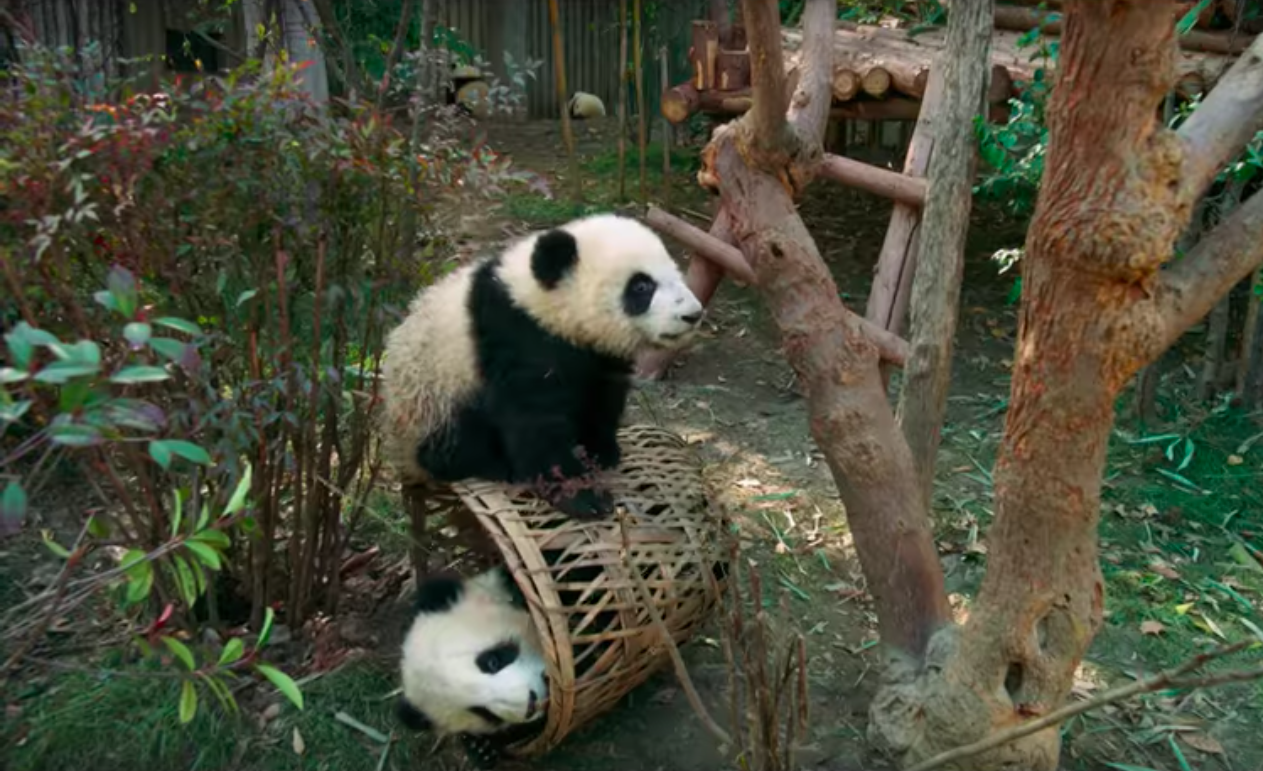Cute, cuddly and lethargic are just a few of the words you can use to describe baby giant pandas.
IMAX’s newest feature film, Pandas brings to light these heavily popularized animals and their rambunctious nature, while also highlighting the importance of conservation.
The film kicks off with a cliche narration by Kristen Bell.
“This is a story about connections between people, between cultures and even between animals,” she says.
While the opening sequence is a little annoying, the movie itself is quite fascinating. More importantly, Bell’s opening line underscores the unique demeanor of giant pandas.
Pandas centers around the efforts at Chengdu Panda Base in China to raise giant pandas to repopulate the diminishing wild population. According to Pandas, there are fewer than 2,000 giant pandas in the wild, and isolated, fragmented environments prevent sexual reproduction. The research center aims to expand the giant panda gene pool and reintroduce pandas to the wild through extensive training and testing.
The first 20 minutes of the film highlights the upbringing of baby giant pandas at the Chengdu base, the process of choosing a panda to return to the wild and the background of the research program — which was influenced by a similar initiative in New England with black bears. The second portion of the film focuses primarily on preparing chosen panda Qian Qian for her return to the wild.
Qian Qian is cute, cuddly and initially dependent on Jake Owens, one of her main caretakers, a biologist from the United States. She’s curious, courageous, playful and a spectacular climber. Sporadically, viewers watch Qian Qian grow; they experience her upbringing and the development of a loving relationship between human and panda. If anything, the movie proves the existence and possibility of interspecies connection.
While at first the 3D imaging comes off as extra and unnecessary, the perspective later adds depth to graphics and animation. In one of the first scenes, newborn giant pandas squirm, cooing and squealing. Later, toddler-like pandas fight, play and eat, toppling down man-made slides and bamboo trees. In some instances the pandas seemingly pop out of the screen, and their slobbery tongues feel but an inch away. This close-up technique enables the audience to closely connect with the animals and experience their growth, like the scientists, in person.
The imaging also adds depth to scenery. For example, flies buzz across a breezy New England forest. Crisp, colorful leaves fall and scatter across the forest floor. Later, pandas wiggle over bustling streams and pristine nature preserves. At other times, cameras move along bustling Chinese streets, filled with music laughter and the sound of sizzling pots. Viewers experience the breeze, the annoyance, the serenity and the chaos, and, most importantly, they’re immersed in Chinese culture.
In a Q&A session following the film, filmmaker Drew Fellman commented on the filming techniques. Fellman said the filming process, shot over the course of three years, was difficult due to consistent rain and China’s hilly topography. As a result, crews spent a majority of time setting up ropes for support. While filmmakers anticipated the pandas movements, the filming was relatively unscripted, which added to the lengthy filming process. Regardless, the filmmakers excelled at masking these obstacles from audiences. The camera imaging is fluid, clean and stable.
While the filming techniques triumph, the music is anything but cute. The mixing is playful — there’s reggae, rock and old-school pop music — but also unfitting and unnatural, especially when paralleled with relaxing scenery. The music choice attempts to add spunk and happiness to a somewhat depressing and bittersweet topic — extinction — but fails miserably.
Regardless, Pandas is a breathtaking ode to the beauty of nature, with a subtle reminder of the importance of conservation and the reality of extinction.



